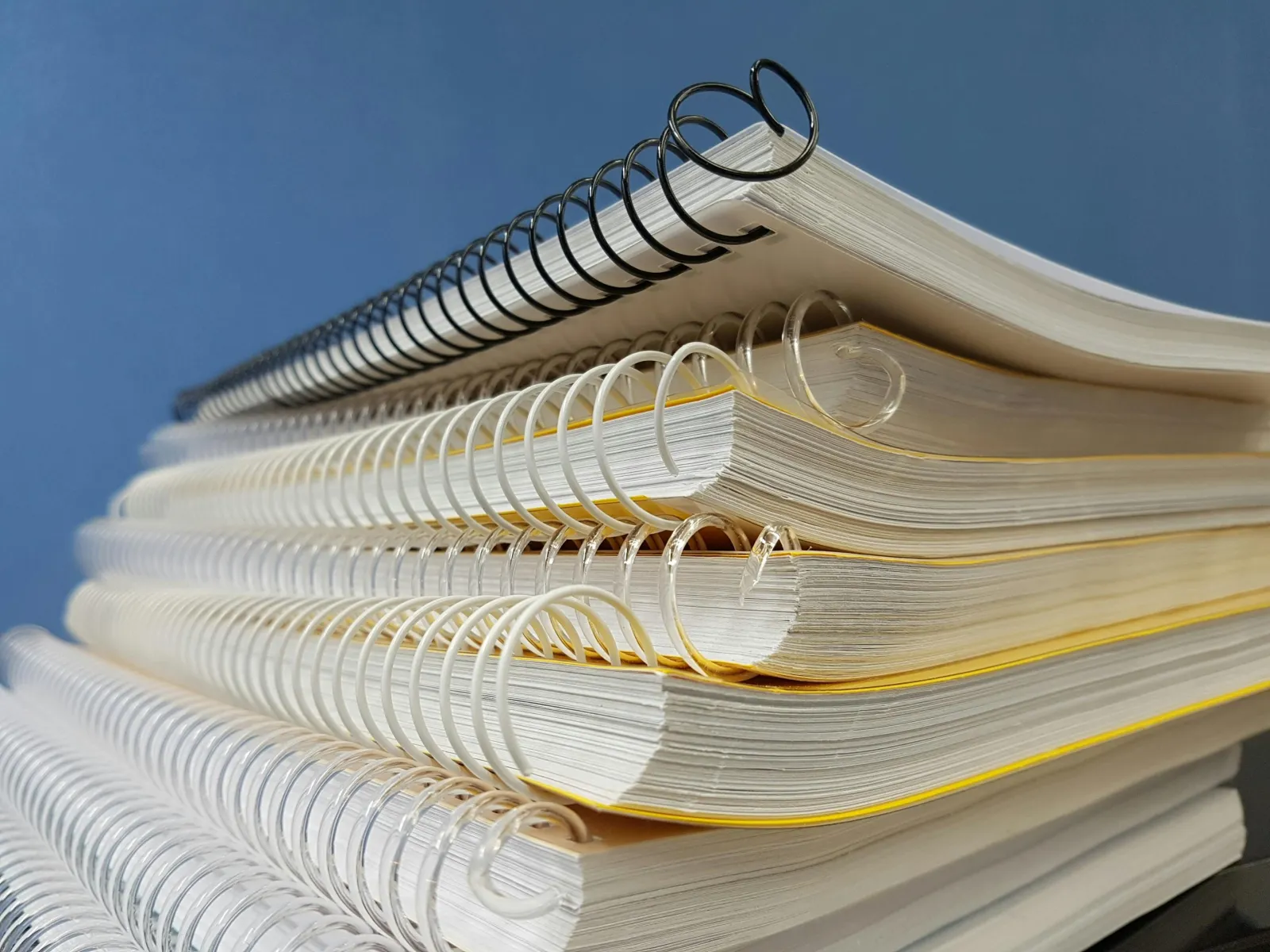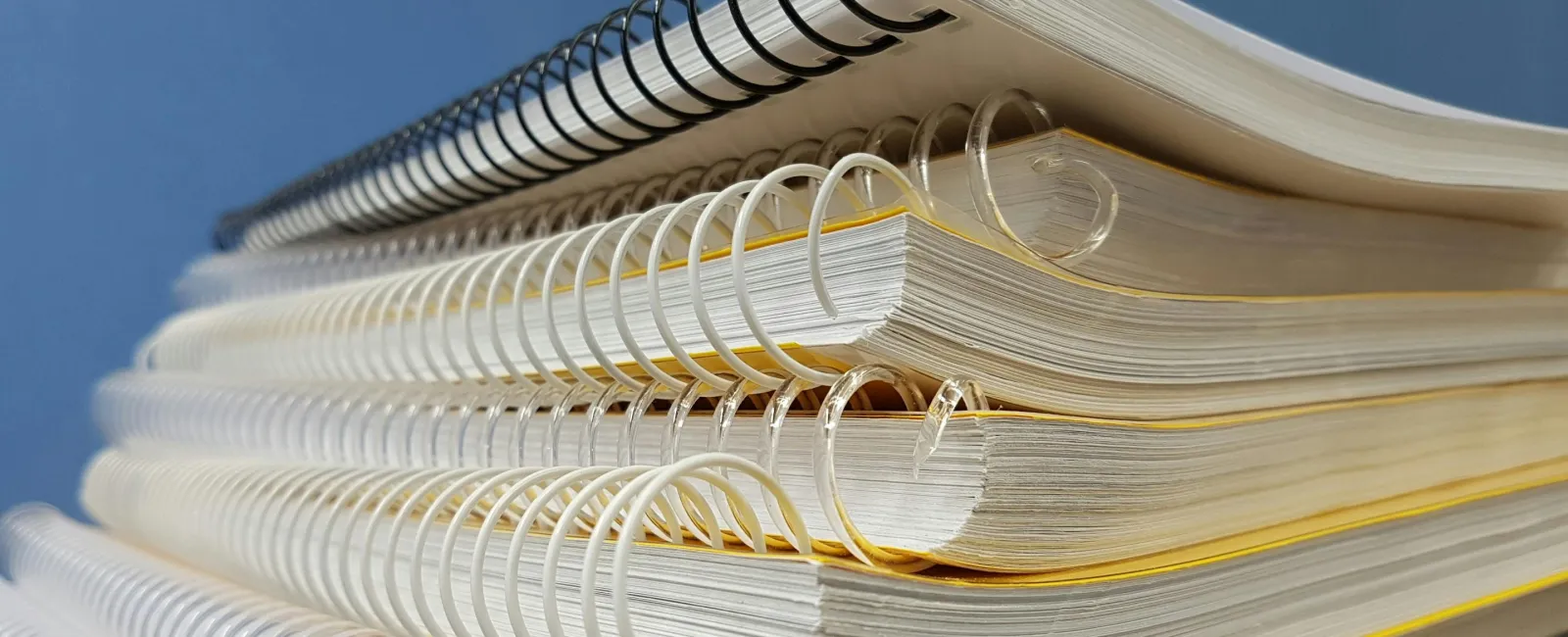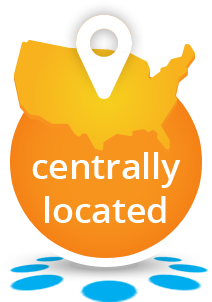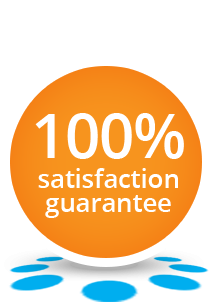Spiral bound books are a commonly seen in classrooms, offices, and homes. They are versatile, practical, and user-friendly.
But what exactly is a spiral bound book? It's a book bound together by a spiral coil, usually made of plastic or metal.
This binding method allows the book to lay flat or rotate 360 degrees for easy use. It's a popular choice for notebooks, reports, and presentations.
In this article, we'll dive deeper into the world of spiral bound books. We'll explore their features, benefits, and uses, helping you understand why they remain a popular choice.

Understanding Spiral Bound Books
Spiral bound books are easily recognizable due to their unique design, which sets them apart from other types of binding. They consist of a continuous coil threaded through holes punched along the edges of the pages.
This design enables each page to turn independently, providing flexibility that makes spiral bound books ideal for note-taking and sketching. They lay flat without requiring extra pressure, ensuring a smooth and comfortable writing experience.
The coils can be made from various materials such as plastic, metal, or wire, each offering different advantages in terms of durability and appearance.
Durability is a significant benefit of spiral bound books, as their secure binding allows them to withstand frequent use and handling.
Whether in academic, professional, or recreational settings, spiral bound books demonstrate their value by enduring everyday wear and adapting well to different uses.
The Spiral Binding Process Explained
The process of spiral binding is straightforward yet highly effective. It begins with aligning the pages and covers to punch uniform holes along one edge. This step ensures the coil can easily thread through each hole.
Once the holes are punched, the spiral coil, often plastic or metal, is threaded through. This step is crucial for securing the pages together. The coil's winding allows the pages to rotate freely, a feature unique to spiral bound books.
The binding process can accommodate various page counts, showcasing its versatility. This flexibility makes spiral binding suitable for thin notebooks or thick manuals alike.
Finally, spiral binding allows for easy page addition or removal. This is particularly handy for dynamic documents where content might change. Overall, this binding method offers functionality and adaptability across many uses.
Advantages of Choosing Spiral Bound Books
Spiral bound books offer numerous advantages that make them a preferred choice for many. One of the standout features is their ability to lay completely flat when opened, providing ease of use.
This binding type also allows for full 360-degree page rotation, enhancing usability. Users can comfortably access content without needing to hold pages open. The durability of spiral bound books is another key advantage. The sturdy coil resists damage, maintaining the book's structure through frequent use.
Moreover, spiral binding is suitable for various applications. It supports projects of different sizes and can incorporate a range of materials. Users often appreciate the flexibility and convenience that spiral bound books provide.
Benefits of Spiral Bound Books:
- Lay completely flat for easy reading and writing.
- Allow for full 360-degree rotation of pages.
- Durable and resistant to wear and tear.
- Versatile for different page counts and materials.
- Easy addition or removal of pages if needed.
These advantages make spiral bound books an excellent choice for both personal and professional settings. They stand out as a reliable option for your publishing project.
Common Uses for Spiral Bound Books
Spiral bound books are incredibly versatile and find applications in many fields. Their flexibility makes them popular for both personal and professional purposes.
In educational settings, spiral notebooks are an essential tool for students. They are ideal for jotting down notes during lectures.
Professionals often use them for reports and presentations. The ability to lay flat is crucial during meetings and presentations.
In creative fields, spiral binding is favored for sketchbooks and portfolios. Artists appreciate the ease of flipping through pages.
Typical Uses for Spiral Bound Books:
- Educational notebooks for students.
- Professional reports and presentations.
- Sketchbooks for artists and designers.
- Manuals and reference guides.
Spiral bound books are also a common choice for menus, planners, and journals. Their adaptability ensures they meet diverse needs across industries.
Customization and Design Options
Spiral bound books offer extensive customization options. This allows users to tailor them for specific needs. Covers can be designed with unique artwork or branding.
You can also choose from various paper types and sizes. This flexibility makes spiral notebooks a go-to choice for creatives. Artists often prefer mixed media paper.
The coil color can also be customized. This might enhance branding for professional presentations. It can also add aesthetic appeal to personal projects.
Additionally, dividers and index tabs can be included. These help with organization and easy navigation. This feature is particularly useful in project planning and management.
Comparing Spiral Binding to Other Methods
Spiral binding stands out due to its flexibility. Unlike perfect binding, it allows pages to lay flat. This is ideal for note-taking and reading ease.
In contrast, saddle stitching is best for thinner books. But it lacks the durability of spiral binding. A spiral bound book withstands frequent use better.
Another benefit is the full rotation of pages. This feature is absent in most other bindings. It offers convenience, especially in constrained spaces.
Spiral notebooks are also easier to produce in small quantities. This makes them cost-effective for short runs. Hence, they are popular for reports and presentations.
How to Choose the Right Spiral Binding for Your Project
Selecting the appropriate spiral binding is crucial. Consider your project's purpose before deciding. Different projects have different needs.
Think about the number of pages. Larger page counts need a bigger coil diameter for durability. Ensure the coil can handle the book's thickness.
The choice of material matters too. Plastic spirals are flexible and colorful, while metal is sturdy and professional. Both options offer unique benefits.
Finally, assess customization needs. Opt for a spiral binding that matches your design goals. This includes color, cover material, and additional features like dividers.
Why Spiral Bound Books Remain Popular
Spiral bound books offer unmatched practicality and versatility. Their ability to lay flat is a unique benefit. This enhances usability for both writing and reading.
Their durability and customization options add to their appeal. In a digital world, their tactile experience remains irreplaceable. This keeps them in demand across many fields. Do you have a spiral bound book project you are working on? We can help! Reach out to us at 866.367.6221 or submit our quote request form.




